12.1 Frozen Patch Level
A subscription normally ensures a recurring download of a certain patch channel. It equalizes remote and local repositories by downloading only the differences. The resulting bundle objects are updated with every mirror process if the remote repository has been updated.
Production environments need stable and reliable software levels that must be provided unchanged over long time frames. In addition, applications that rely on specific kernel versions and kernel modules might require a patch level that differs from patch levels required in other server environments providing other applications.
This means that the patching components must ensure that a specific software level can be frozen at any point in time and can be provided to its targets as long as needed.
Although there isn’t a specific menu within ZENworks Configuration Management to fulfill these requirements, they can be achieved easily within ZENworks Configuration Management by copying an existing update bundle and assigning properties to the copied bundle. The copy process does not increase disk space use because it only uses some internal pointers that are set within the database.
12.1.1 Naming Standards for Frozen Patch Levels
Novell Consulting recommends a naming scheme for copied bundles (also known as frozen bundles) that relies on following principles:
%PRODUCT%[%VERSION%[SP%SP-LEVEL%]]-%UPDATE-%DATE%
|
Name |
Description |
|---|---|
PRODUCT |
SLES | OES This part of a name identifies which product the frozen bundle is for. If an object name starts with SLES, you need to assign it to pure SUSE Linux Enterprise Server systems (such as SLES 11) as well as to the corresponding Open Enterprise Server system (such as OES 11). |
|
VERSION |
2 | 9 | 10 | 11 This part of the name identifies the version (SLES or OES) that the frozen bundle applies to. |
|
SP-LEVEL |
GA | SP1 | SP2 | SP3 | SP4 The service pack level. |
|
UPDATE |
This string informs the administrator about the bundle purpose. |
|
DATE |
The date when the frozen bundle was copied from the original update bundle or when a frozen bundle from an earlier stage (DEV, TEST) was created and used as source for this bundle. |
12.1.2 Creating a Frozen Patch Level
As an example, imagine a standard subscription for SUSE Linux Enterprise 11 SP1 servers where the Monolithic Bundle option is chosen, as illustrated in the next two figures.
Figure 12-1 Example Subscription
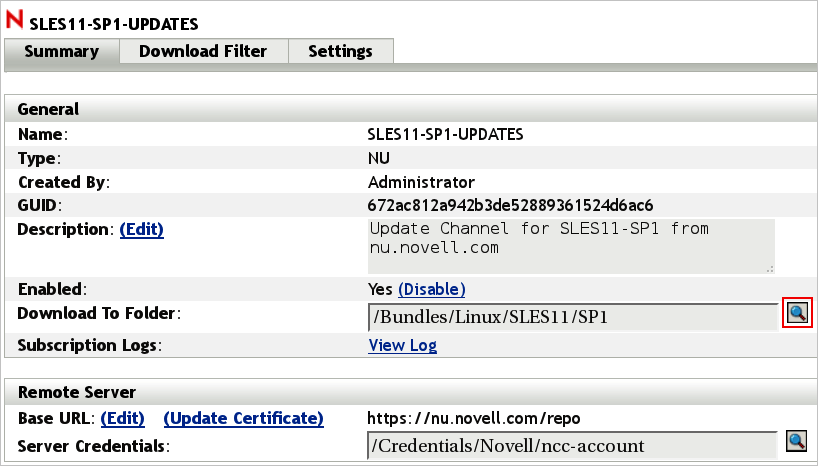
Figure 12-2 Subscription Options for the Example
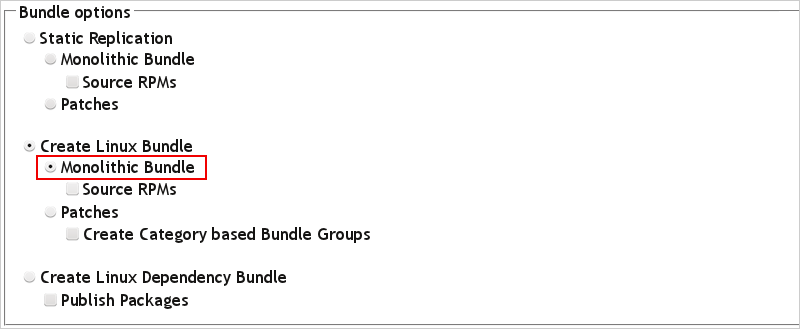
By using this subscription, a mirror automatically creates a SLES11-SP1-Updates folder in the bundle menu below Bundles/Linux/SLES11/SP1 as displayed in the following figure.
Figure 12-3 Folder Automatically Created by the Mirror Process and Based on Subscription Properties

The monolithic bundle is created by the mirror process below the SLES11-SP1-Updates folder.
Figure 12-4 Monolithic Bundle Created by Mirror Process

It contains all patches for SLES 11 SP1 64-bit that have been provided by Novell at the time of the mirror process.
To freeze this bundle, you need to execute the actions illustrated in the following figures. The SLES11-SP1-Updates bundle created and maintained by the mirror process is used as the source for a new frozen patch level.
Figure 12-5 Creating a Frozen Bundle - Copy Source Bundle

Figure 12-6 Creating a Frozen Bundle - Assign Name to Bundle Copy
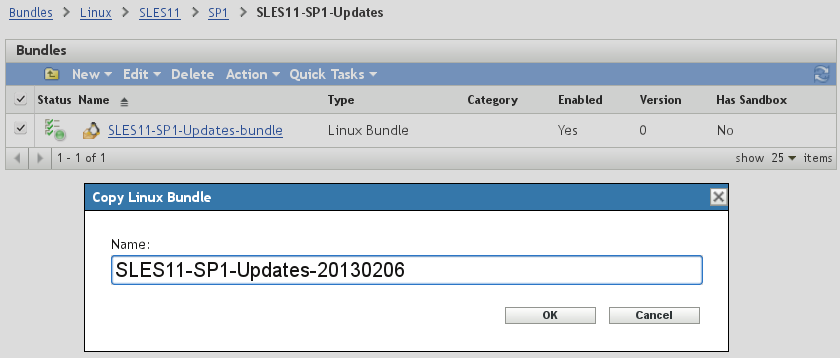
ZENworks Configuration Management treats most object names as case-insensitive. If you need to change the case of an object name, it must be renamed first and named to the correct spelling after.
The frozen bundle is displayed in the folder view beneath the update bundle created by the mirror process, along with older frozen patch levels and the bundle groups used to assign frozen patch levels to target devices in the different environments.
Figure 12-7 Creating a Frozen Bundle - New Frozen Patch Bundle
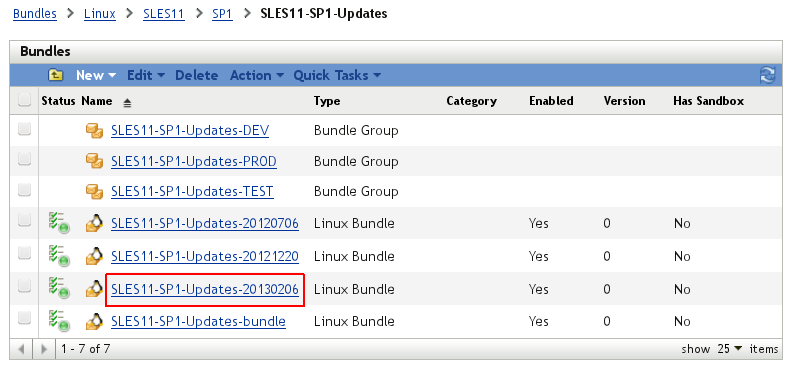
A glance at the Packages tab shows the packages contained in the copied bundle in alphabetical order, and also shows the properties. All properties of the original bundle remain unchanged.
Figure 12-8 Frozen Bundle - Package View
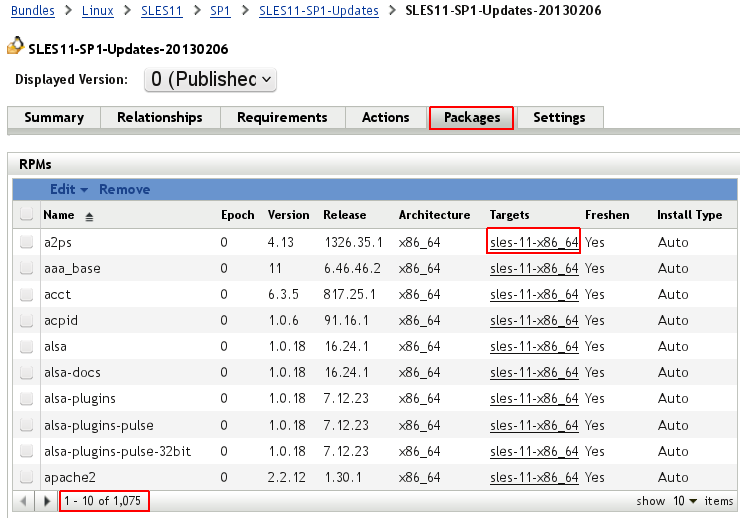
The frozen bundle is ready for assignment and will never change automatically, even with the next mirror cycle.
This procedure must be executed for all products and their respective service packs to gain the advantage of frozen patch bundles.